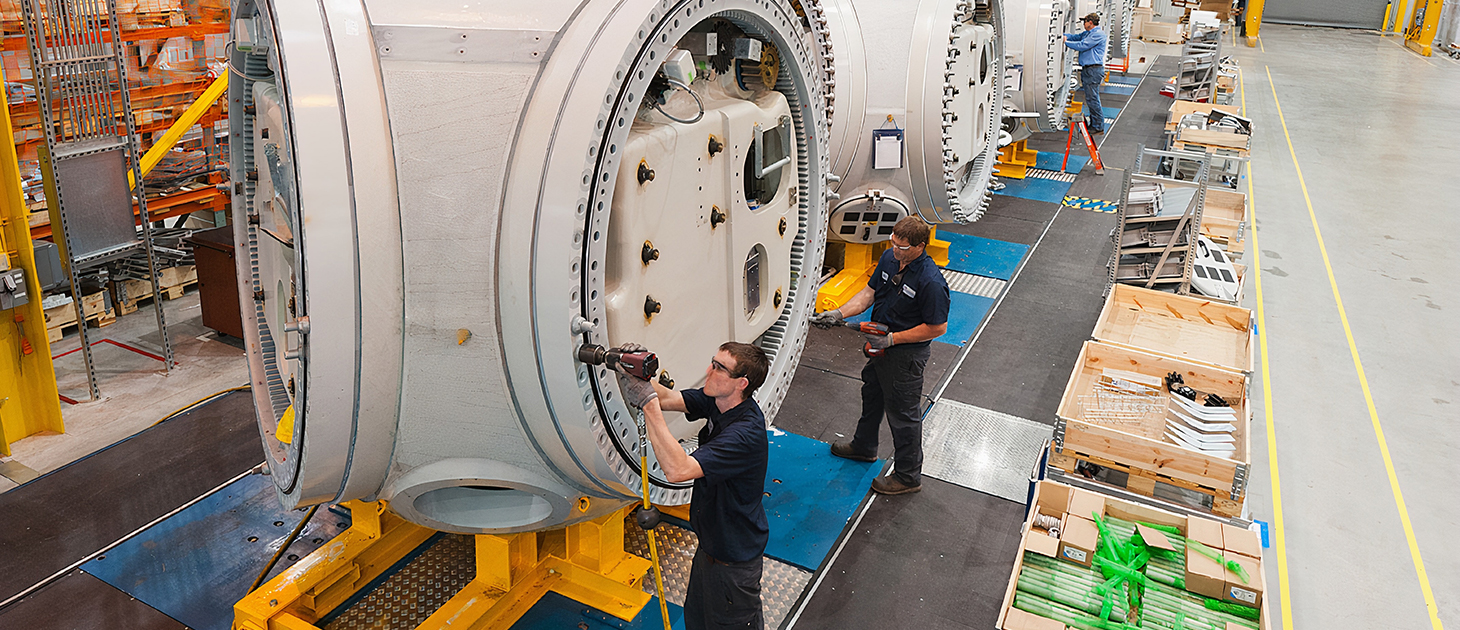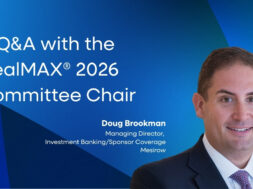Reshoring’s Impact on Middle-Market Manufacturing and Strategic Divestments: Day Two of the ACG Fall Summit
Manufacturing and strategic divestments took center stage on the second day of ACG's Fall Summit.

Tariffs and supply chain disruption from COVID-19 prompted many businesses to consider bringing their supply chains back to North America, which is good news for American manufacturers.
U.S. companies rushed to offshore manufacturing activities to low-cost labor hubs like China and Mexico in the early 2000s, but rising tariffs and strained supply chains have reversed that trend, said John Stewart, a partner at Middleground Capital, during the first panel session of Day Two of ACG’s Fall Summit, titled “Reshoring’s Impact on Middle Market Manufacturing.”
“Now, if you don’t have supply chain security, you’re missing out,” Stewart said.
Check out Day One of the ACG Fall Summit panel sessions.
Larry Naughton, a corporate attorney at Mintz, said China is no longer the lowest-cost destination for offshoring, thanks to increased competition with other markets like Vietnam and the global pandemic. “COVID just threw gas on the fire,” he said.
Panelists agreed that there has been a shift in manufacturing away from pure cost-based decision-making, and toward an emphasis on supply chain resiliency and stability.
When a customer of one of Middleground’s portfolio companies decided to do business with a manufacturer based in Mexico, they suddenly found it difficult to get supplies across the border when COVID-19 hit. “They came back and asked ‘how quickly can you start making these products for us again?'” he recalled.
With manufacturing projects returning to the U.S., an important area for Clint Bucholz, general manager for Michigan-based manufacturer GLE Precision, has been finding workers to keep pace with growth.
“Investment in new technology and equipment has lagged,” he said, adding that some of his facility’s machines date back to the 1980s and earlier. This doesn’t excite younger workers for a career in manufacturing, he added. However, the company is adding robotics and other state-of-the-art hardware to its facility.
Middleground Capital plans on investing $250 million across its manufacturing portfolio, according to Stewart, who started his career as a line worker making components for the automobile industry. “Projects like that get me and our investors excited,” he said. “Bringing upgrades makes it easier to recruit younger talent.”
But technological enhancements are more than just providing a facelift to aging industries. With them comes rapid increases in output and efficiency, which quickly overcomes domestic labor costs that once sent jobs overseas, according to the panel.
There is also a growing sense of social responsibility among manufacturers and their investors. The panelists recognized the inadequacies of current federal minimum wage levels. Stewart said $7.25 an hour is not enough for workers to live on, and that current efforts to raise it to $15 an hour is a good start.
“I call on my fellow private equity GPs. We have to be responsible investors,” he said.
Stewart is not waiting on the federal government and urged other investors to raise wages within their portfolio companies. “I will take the efficiency of private equity over the inefficiency of government any day,” he said. “We can make real change by adopting these philosophies ourselves.”
Articulating Divestment Strategies
Today’s disrupted business environment is prompting corporations to reimagine their business models for the future.
On the final panel of ACG’s Fall Summit, which focused on strategic divestments, M&A professionals explored how organizations can reshape their portfolios, what to consider when planning and executing a carve-out, and approaches to value creation, along with the merits of an asset-light strategy.
The panel, titled “Where Corporate Strategy Meets M&A” and sponsored by Globalization Partners, included a discussion about how to accelerate a divestiture.
According to EY’s “2020 Global Corporate Divestment Study,” 54% of corporate respondents said they will continue divestment preparation or will accelerate plans to divest in response to the pandemic. Seventy-eight percent said they expect to divest within the next two years.
Jim Levitas, co-founder and partner at private equity firm Lion Equity Partners, said that in order to speed up a divestiture, M&A professionals should become familiar with the buyer’s transaction background, hire service providers with experience relevant to the particular transaction, and file paperwork ahead of time.
“Try to get a buyer to work parallel on due diligence and the purchase agreement,” Levitas said. “A few extra days upfront can save weeks down the road.”
He also recommended digging into a buyer’s reasoning for purchasing the business. “There are a lot of opportunistic buyers out there now. You don’t want that. That type of buyer doesn’t provide certainty,” he said.
In order to garner a higher valuation, Hani Alexander, partner of strategy, transactions, and supply chain at EY-Parthenon, suggested three actions: reduce debt, improve EBIDTA and boost multiples.
Achieving those could involve using the “80/20 rule”—in which 20% of a company’s customers represent 80% of its sales—in order to find the most profitable customer and SKU opportunities. Another approach is retooling labor by outsourcing services and developing shared service models.
Bill Watkins, managing director at Harris Williams, emphasized the importance of company culture when valuing a business. “Culture is hard to measure but can be a deal-killer,” he said.
The best way to communicate culture is by telling the company’s story as clearly as possible. “Create a New York Times bestseller for your company,” he said. He recommends a professionally-produced video.
“It goes a long way,” Watkins said. “If you’re demanding a high price, culture is the invisible bridge and leap of faith people need to make it.”
According to Jeff Schlosser, strategy and transactions, and national supply chain leader at EY-Parthenon, sellers should implement an asset-light framework before exiting.
The asset-light model involves determining the most essential functions of a company’s business model. Whatever doesn’t make the cut must go, Schlosser said. “There are no sacred cows.”
Debbie Millin, COO of Globalization Partners, said an organization’s people matter more in a transaction than its products and services. To preserve this part of a business during a divestment, she says to complete it as fast as possible or risk losing human capital, which could reduce a company’s value.
That becomes even more difficult when transactions happen outside the borders of the U.S., and partnering with an employer of record, or EOR, to handle human resources, tax and other business services is essential. “Handle transactions with sensitivity and speed,” she said.

Benjamin Glick is Middle Market Growth’s associate editor.


